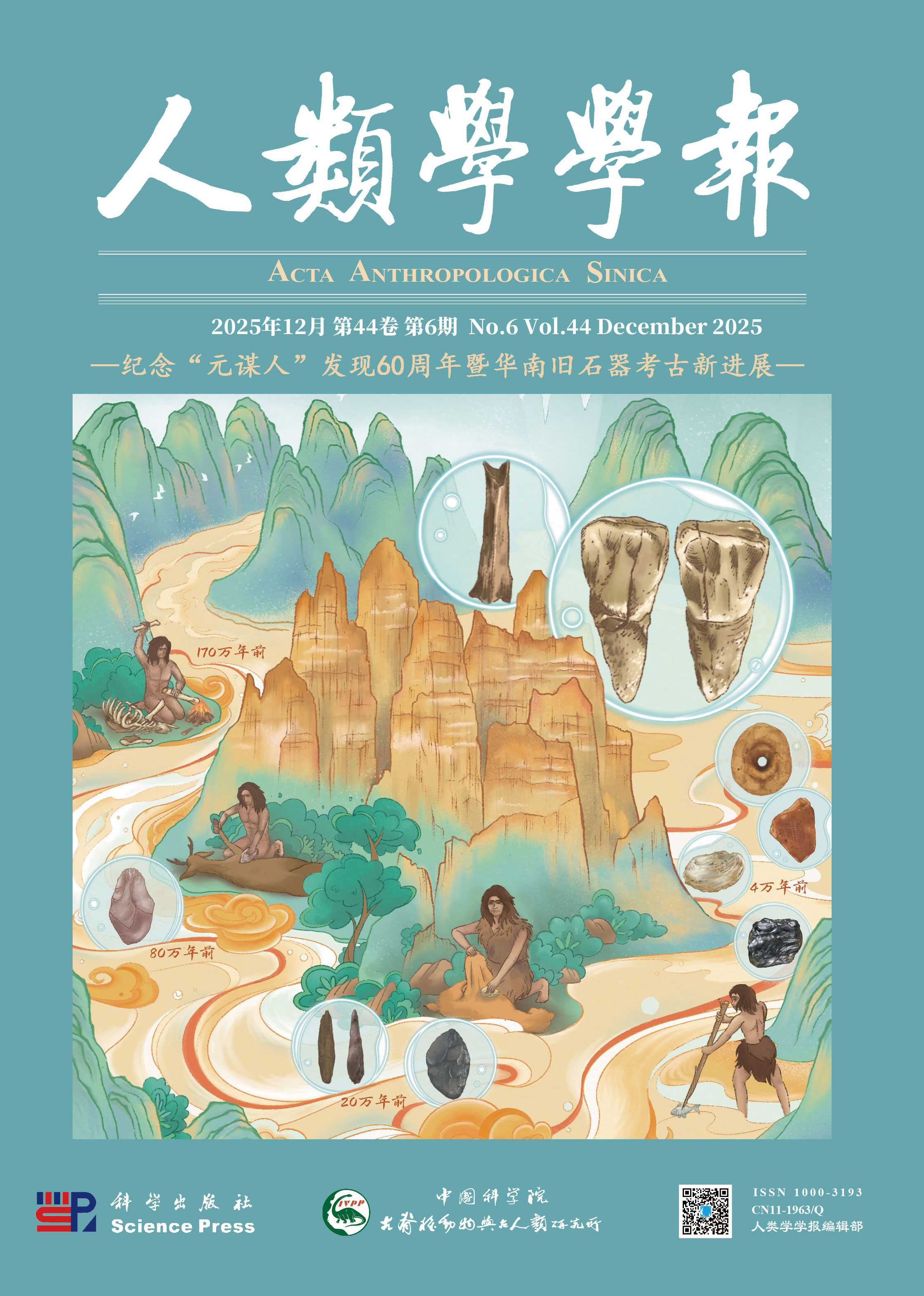The juvenile mandible of Lufengpithecus
Lu Qingwu
1995, 14(02):
93-189.
 Asbtract
(
508 )
Asbtract
(
508 )
 PDF (2830KB)
(
128
)
Related Articles |
Metrics
PDF (2830KB)
(
128
)
Related Articles |
Metrics
A hominoid mandible of PA869 was collected from Lufeng, Yunnan Province during the excavation of winter season in 1980. The greater part of the left mandibular corpus behind the dm1 and the rami were broken off. But the bulk of the right mandibular body was preserved basically and the symphyseal part was beautifully preserved. All of the deciduous teeth, except the two dm2 are kept in situ. And the crown of the embryo of right first molar had developed well inside the mandibular body, and will emerge soon. The mandible is of about 3-3.5 years old, and belongs to a female individual. The distinctive characters of the juvenile mandible of Lufengpithecus were observed and measured, and compared with Sivapithecus, Australopithecus and the living great apes. The results of these comparisons were as follows.
At the frontal surface of the symphyseal region, the superior part is vertical, and the central part has the shape of sharp bulge, to be strongly sticking out. At the posterior surface of the symphyseal region the planum alveolare is steeper, and it intersects the basal plane of mandible with an angle of 65°.The angle is larger than that of the juvenile mandible of Sivapithecus from Pakistan, GSP 11536, of Australopithecus from Kenya, KNM-ER 820 and KNM-ER 1477A, and of the living great apes, except the Simia stayrus No.19, with an angle of 65° too. The superior transverse tori is weak.
Compared with the length of mandibular corpus, the height of symphyseal region is much larger. Its sympnyseal highness-length if body index (symphyseal highness / infradentale(id) to distal side of M1 * 100) is 73.5, and the same index of GSP 11536 is 73.3. Both indices are very similar. It indicated that all of the mandibular corpora of both infant Miocene hominoids are high and short. But the same indices of the juvenile extant great apes (No.389, No.19 and No.246), and that of the infant Australopithecus (KNM-ER 820 and 1477A) are all small than that of Lufeng infant ape.
The Lufeng juvenile jaw has the lateral prominence on the surface of lateral corpus, and the lateral prominence divides into two branches, an upper and a lower one. This feature of the Lufeng juvenile is similar to the adult individual. In comparative specimen in this article, only the Simia satyrus, No.246 seemingly possess this feature. The whole lateral corpus of the Lufeng juvenile mandible is specially high and thin. The thickness-height index of mandibular body (thickness/highness x 100) is very small. Index I (at mental foramen) is 33.5, and Index II (at M1) is 60.0; and the GSP 11536, Index I is 54.7, Index II is 74.1.It indicates that the robustness of the juvenile mandibule body of Sivapithecus from Pakistan is larger than that of Lufeng infant mandible. The Thickness-height index of mandibular body(II) of the juvenile Australopithecus, for example, KNM-ER 820 is 94.1, KNM-ER 1477A is 93.1, i.e. the juvenile mandibular robustness of Australopithecus is largest among the fossil hominoids. There are double mental foramina on the corpus of the Lufeng juvenilc mandble. The vertical situation index of mental foramen(centre of the foramen to bottom edge of corpus / centre of the foramen to alveolar edge x 100) of the Lufeng mandible has a mid vaule between that of Australopithecus (KNM-ER 820)/Sivapithecus (GSP 11536) and that of the living great apes (No.19, 246, 389).
The above characters of the juvenile mandible of Lufengpithecus indicate that the proportional relations between the lengths, the heights and the thicknesses of the frontal and posterior parts of the corpora are very similar to those of the adult mandible of same species.









